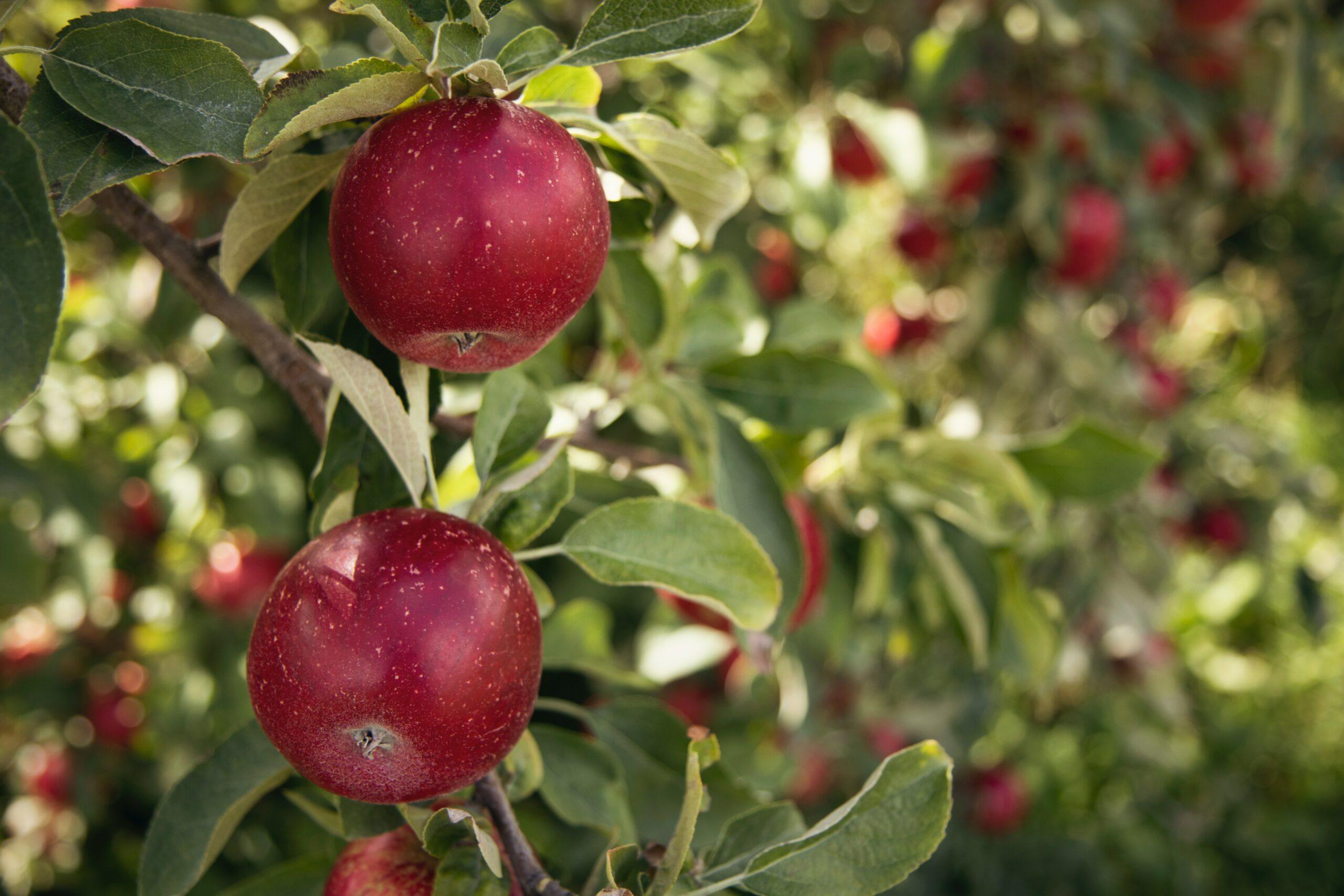Growing apple trees can be a rewarding endeavor, but to ensure healthy and productive trees, careful planning and upkeep are necessary. Here is a detailed instruction on how to grow apple trees:
1. Choose the Right Location:
In your garden, pick a location that receives at least 6 to 8 hours of direct sunlight daily.
To stop diseases, make sure the air is flowing freely.
In slightly acidic to neutral soil (pH 6.0 to 7.0), apple trees thrive. Check the pH of your soil. In case the soil is too acidic or alkaline, you might need to amend it.
2. Select Apple Varieties:
Select apple tree cultivars that are suitable for your area’s climate. For suggestions, speak with your neighborhood nursery or agricultural extension office.
If you want apple trees, think about whether you want them for fresh eating, baking, or making cider. Different varieties have different flavor profiles.
3. Planting:
Apple trees should be planted in the late winter or early spring when they are still dormant.
Without bending or crowding the roots, create a hole that is both wide and deep enough to fit the tree.
Place the tree so that the graft union, which is the protruding region near the base of the trunk, is elevated above the ground.
To settle the soil and remove air pockets, completely fill the hole with soil.
To retain moisture and keep weeds under control, mulch the area around the tree’s base.
4. Pruning:
Young apple trees should be pruned to create a strong scaffold structure and to shape them.
Pruning should be done on a regular basis to remove unhealthy or dead branches, enhance airflow, and preserve the desired shape.
Use the right pruning methods to prevent damaging the tree.
5. Watering:
Keep the soil consistently moist, especially in the first few years after planting the tree.
To promote deep root growth, water deeply and infrequently. Throughout the growing season, provide roughly 1 inch of water per week.
6. Fertilization:
Test the soil to determine its pH and nutrient composition. When necessary, fertilize your apple trees with a balanced fertilizer based on the findings.
Prevent new growth by fertilizing in the early spring.
7. Pest and Disease Management:
Aphids, codling moths, and other pests and diseases, such as powdery mildew and apple scab, should be kept an eye out on your apple trees.
Follow the directions on the label when applying organic or chemical treatments.
Maintain good hygiene by picking up dropped fruit and leaves to lower the risk of contracting diseases.
8. Thinning Fruit:
Thin the fruit in the early summer when it is about the size of a marble to ensure larger and healthier apples. Every apple on a branch should have enough room between it.
9. Harvesting:
Depending on the variety, apples can be harvested anywhere from late summer to early fall.
Fruit should be picked while still firm and mature. Take the apple from the tree by gently twisting or lifting it.
10. Storage:
Apples should be stored in a cool, dark area with good ventilation. Check the specific storage advice for your apple variety as some varieties store better than others.
Apple tree cultivation requires persistence, but with the right care, you can reap a plentiful crop of delectable apples for many years to come. Your apple trees need regular care to stay healthy and productive, including pruning and pest control.
The photo is from unsplash.com



